Instruction
Wrist action: The No. 1 killer of good putting
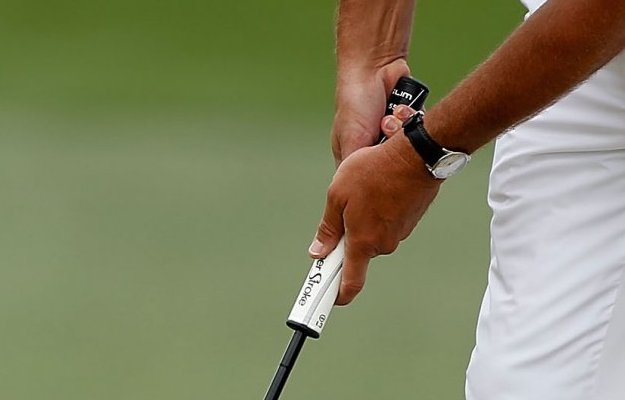
The lack of control of the lead and rear wrist actions during the putting stroke causes more problems for golfers on the putting green than anything else.
In my putting academy, I use several high-tech systems in order to analyze peoples’ putting strokes — for this article I will use Advanced Motion Measurement’s 3D Motion Analysis System and Science and Motion Sports’ SAM Puttlab, these systems will help golfers understand the motions of the wrists during the stroke.
Wrist Articulations
Grab a putter, make a few normal strokes and monitor your wrist motions. Now, make a few exaggerated strokes — open the blade, close the blade, flip your wrists back and through — and what you will see is that the wrist joints can move in many ways allowing you to make strokes of all different types. It is with this process in mind that I would like to discuss and explain the articulations of the forward and rear wrist joints and what positives and negatives they accommodate during the putting stroke.
The lead wrist controls the aim of the putter face, and when the forward wrist bounces around golfers will not be able to control the ball’s starting direction. The trailing wrist controls the loft of the putter head, and if the rear wrist is “slapping” at the ball golfers are adding loft to the blade during impact. When this happens, it causes the ball to jump into the air and the ball tends to come up short. Therefore, we must understand how to control the wrists individually as well as together, because when one moves uncontrollably the other follows suit.
Let’s examine in greater detail the articulations of the wrist joint. Hold the putter in your lead hand out as if you were going to shake someone’s hand. In this position, golfers will see that you can make the following three motions:
- Flex and Extend (from front to back and back to front).
- Cock and Uncock (from top to bottom and bottom to top).
- Pronation and Supination (rotation from palm up to palm down and vice versa).
Examine the motions of PGA Tour players today, and you’ll notice that they have very solid wrist motions back and through. It is an absolute necessity on the super-fast greens they play on from day to day. Their “solidity” helps them to move the putter back and forth with control and allows them to overcome their emotions and funnel their focus into making a solid, repeatable stroke when it matters most.
Flexion and Extension
When the forward wrist flexes or extends from front-to-back or back-to-front, it creates “wrinkles” where your arm and wrist meet on either side of the arm (relate the side of your arm to either the watch dial side or the watch clasp side). These wrinkles can help determine which motion is occurring: If the wrinkles are on watch dial side of your arm, then you are “extending” your wrist. And if the wrinkles are on the watch clasp side of your arm, you are “flexing” your wrist. This is a side-to-side motion and will be shown as: (F) flexion and (E) extension.
Cocking and Uncocking
When the wrists “cock” (also called radial deviation), the thumb side of the wrists move closer to your arms. And when the wrists “uncock” (also called ulnar deviation), the pinkie side of your hands move closer to your arm. This is an up-and-down motion, not side-to-side motion as commonly mistaken and will be shown as: (R) cocking and (U) uncocking
Pronation and Supination
The wrist “pronates” when it rotates from a palm-up condition into a palm-down condition. The wrist “supinates” when the palm moves from a downward condition into a palm-up condition. Remember that when you are carrying a soup bowl or a tray your palm must supinate in order for you to balance the item on your palm. This is a rotational motion only and will be shown by: (S) supination or (P) pronation.
Shaft Face on Angle
The putter shaft can be in one of two positions during the stroke: lagging or scooping. A lagging motion (L) occurs when the grip is in front of club head or scooping (S) position, when the grip is behind club head during the stroke.
The 3D Analysis Model: Address (15 Handicap)
The Address Position in Putting: The leading wrist positions are on the left and the trailing wrist positions are on the right of the above graph.
Leading Forearm Flex and Extension: 15.9E
Leading Forearm Rotation: 80.2P
Leading Forearm Deviation (cocking and uncocking): 38.4U
Trailing Forearm Flex and Extension: 4.2F
Trailing Forearm Rotation: 72.7S
Trailing Forearm Deviation (cocking and uncocking): 37.3U
Shaft Lean at Address (lag or scoop): 0.2S
Issues
Flexion/Extension: Look at your forward wrist and you will notice that its position helps to influence the club shaft’s vertical position in space, or your “forward press.” The lead wrist places the club shaft into the proper position at address — one that is not too backward leaning or too forward leaning.
The shaft appears to be forward leaning as you look “down,” however, 3D Analysis shows this club shaft to be basically perpendicular to the ground (actually in a 0.2 Scooping Position). Thus, when the lead wrist is placed into a position that is not quite neutral or a more “pronated” position, the lead wrist will bend, altering your perception of the club shaft. When you look down, it always seems that the shaft is leaning forward, but most of the time it is not. Use a mirror to monitor this action and you will understand “the illusion of the club shaft.”
Rotation: As stated above, the rotation of the left forearm helps to influence the motions of the forward wrist during the putting stroke; however, several factors must be understood before golfers can completely control the actions of the putter. This rotation of the lead forearm helps to open and close the putter during the stroke — some putting styles advocate this motion, while others do not. The only key for you to understand: If your lead forearm is out of control, you will never consistently do either to a high degree.
This action of the forearm is influenced by several factors that you must understand:
- The lead-hand grip style.
- The lead-hand grip position.
- The type and size of the putter grip itself.
If the lead hand is in an overly strong or overly weak position, it will place the lead forearm in an over-rotated or under-rotated position. This will influence the natural actions of the forearm during the stroke. While the grip position can be “neutral” if you place the putter too much in the fingers of your lead hand, it can also alter the natural motions of your lead forearm causing it to over rotate through the impact zone if you are not careful. Finally, the size of the grip itself can also lead to lack of lead forearm control during the stroke. Thankfully all these issues can be controlled and monitored at the address position. It is up to the golfer to correlate these motions and audit what they are trying to do during the putting stroke.
Deviation: In reality, the “deviation or uncocking” of the wrists at address usually does not get too much out of control unless the club is placed too much in the fingers of the lead hand. That usually happens because the grip is too small. If you are having issues with the lead forearm rotation and it is linked back to the grip itself and its position in the fingers, you most likely will have issues within this area as well.
Positions
There are two points to remember while you address the ball; first, it makes most golfers very comfortable and much more successful when the thumbs of both hand are placed in a position where they run down the middle of the grip itself. This action usually places the forearms in a positive position in order to move back and forth. Secondly, you must train your forward hand and mind in order to lead and control the actions of the putter head and its subsequent face angle. The actions of the lead forearm do more to control the actions of the putter head/putter face than anything else within the putting stroke.
The 3D Analysis Model: Top (15 Handicap)
The Top Position in Putting: The leading wrist positions are on the left and the trailing wrist positions are on the right of the above graph.
Leading Forearm Flex and Extension: 13.5E
Leading Forearm Rotation: 83.2P
Leading Forearm Deviation (cocking and uncocking): 38.1U
Trailing Forearm Flex and Extension: 1.7F
Trailing Forearm Rotation: 72.2S
Trailing Forearm Deviation (cocking and uncocking): 39.4U
Shaft Angle at Top (lag or scoop): 8.3L
Issues
Flexion/Extention: The only real issue that can occur during the backswing in regards to the flex and extension of the lead wrist can be when the forward wrist “flexes” on the backswing, leading and powering the putting stroke. This is easily seen when golfers take the putter back. Their watch dial starts to point down at the ground, and the putter head appears to be “hooded” on the way back as well. This flexion makes it alsmost impossible for golfers to move back through impact without some physical manipulation to start the ball on the desired target line.
Rotation: Once the putter is in motion, the rotation of the lead forearm should happen naturally (based on the putting stroke you emulate: “arc” or “square-to-square”). However, this can be altered if the player begins to force these actions to happen. Whenever a player tries to guide his putting stroke, the rotation of the lead forearm is usually altered and misguided. When this happens, not only do golfers have a faulty putter position at the top of their stroke, but they will never be able to deliver the putter head consistently into the ball. The only way golfers will be able to make putts consistently would be to have super-human hand/eye coordination, and this by itself is a very complicated process at best to control.
Deviation: Whenever the putter is “picked-up” by beginning players, the putter tends to move up and outside of their intended path and this will cause radial deviation or a cocking of the wrists on the backswing on longer putts. Whenever golfers add a hinge to their wrists on the way back, they have added another putting power source and controlling distance will be very hard. Beginning player who fight this problem will find it much easier to keep the putter head “low to the ground” on the backswing in order to alleviate this problem
Positions
Flexion/Extension/Rotation: If left alone, golfers will find that this action/reaction will almost take care of itself, thus, if they don’t try and overpower the motion they will find that lead forearm rotation will take care of itself naturally. Flexion and extension on the backswing almost never happens unless golfers are leading and powering the putter with their forward wrist off the start. This only tends to happen, as stated, in the beginning player.
Deviation: There is no real worry on the deviation side from address to the top.
The 3D Analysis Model: Impact (15 Handicap)
The Top Position in Putting: The leading wrist positions are on the left and the trailing wrist positions are on the right of the above graph.
Leading Forearm Flex and Extension: 21.5E
Leading Forearm Rotation: 83.9P
Leading Forearm Deviation (cocking and uncocking): 38.5U
Trailing Forearm Flex and Extension: 5.9F
Trailing Forearm Rotation: 67.2S
Trailing Forearm Deviation (cocking and uncocking): 40.5U
Shaft Angle at Impact (lag or scoop): 0.8S
Issues
Flexion/Extension: Whenever the putter begins at a certain position in regards to the shaft angle, it would stand to reason that if it does not return to that exact same position at impact that the effective loft of the putter would be off. As you can see from the above photo, the shaft angle at impact is 0.8 scoop, while it began at 0.2 scoop at address. This means that the putter shaft is slightly “backing up at impact,” and when this happens the lead wrist is breaking down and flipping, adding loft to the putter at impact. This causes a golfer to lose control of their impact alignments.
Whenever the lead wrist breaks down, the effective loft of the putter will be increased!
For example: If you were using a TaylorMade Daytona, which has a factory set loft of 3.5 degrees, and you added the above 3 degrees of loft (as shown on the right side of the graph in red), then your dynamic loft at impact would be 6.5 degrees (3.5 + 3 = 6.5). With that much loft at impact, the ball will be launched into the air adding even more inconsistency as it bounces, skids and then finally rolls.
Rotation: Monitor your directional control and how the putter blade is influenced and you will find that the forward wrist and forearm basically control this activity. Whenever the lead forearm under-rotates, the ball will be shoved right (for a right-handed golfer) and when the lead forearm over-rotates the ball will leave the blade to the left. Eighty-three percent of the ball’s directional control is affected by the face angle of the blade at impact. Only 17 percent of the ball’s direction is influenced by your stroke’s path!
As you examine the lead forearm in the address position and impact, it should be very close to the same number depending on what type of stroke you use as well as your ball’s position. In this example, you will see that at address the lead forearm was 80.2 degrees pronated and at impact it was 83.9 degrees pronated. That shows that the lead forearm has become too active during impact, thus the blade is pointing too far left and “pulling” the putt to the left.
Now that we understand that the lead forearm was too overactive, I’m going to explain what happens to the putter head’s rotation as well.
The above graph shows the rotation of the club head at the top of the backswing (open 7.9 degrees) and into the full-finish position (closed 18.1 degrees). This gives us a total putter head rotation of 26 degrees (18.1 + 7.9 = 26) on the average. As you can see, a very SMALL over-rotation of the lead forearm really causes the blade to shut!
Deviation: When golfers hit putts with a putter that is too long and too upright, or a longer putt, the tendency is to “stand up” in order to make the putter fit more effectively. When golfers stand up, there is some ulnar deviation or an un-cocking action of the wrists during impact. This activity is directly linked to a putter that does not fit, and 90 percent of putters today are too long and too upright.
The extra length and overly upright putter lie of most putters today causes the toe of the putter to sit too high. This action will cause the body to “stand up” during the putting stroke and create too much ulnar flexion.
Positions
There are three things that you must note at impact in order to control your lead wrist and its control of the golf ball during impact.
- Flex and Extension: The flex and extension of the lead wrist during impact controls your putter’s dynamic loft and the putter’s angle of attack. If either of these actions is out of control, then you will never have a consistent “roll” off the face of the putter and this will make consistency non-existent.
- Rotation: The lead forearm and wrist control the amount of putter head rotation on the way back and through. Depending on your stroke type (“arc” or “square-to-square”), you will want to monitor and or eliminate these actions.
- Deviation: If a putter does not fit a golfer, he or she will almost always “stand up,” altering address-to-impact wrist cock. If golfers change this angle, they will create an off-plane impact position with a high rear forearm!
When you “stand up” during impact you will create too much ulnar flexion and a high rear forearm results!
The 3D Analysis Model: Finish (15 Handicap)
Whenever the lead wrist breaks down the effective loft of the putter will be increased!
Leading Forearm Flex and Extension: 33.1E
Leading Forearm Rotation: 76.0P
Leading Forearm Deviation (cocking and uncocking): 34.6U
Trailing Forearm Flex and Extension: 13.2F
Trailing Forearm Rotation: 63.3S
Trailing Forearm Deviation (cocking and uncocking): 37.6U
Shaft Angle at Impact (lag or scoop): 32.6S
Issues
Flexion/Extension: Examine the photo above and numerical values, and you will see that through impact the body stalled and the “hand slap” took over. This is the reason why we see the big breakdown of the lead wrist after impact. This is not of too much concern unless the impact alignments and shaft angle really begin to scoop.
Rotation: Reduced forearm rotation into the finish (for this player only) causes “curly-q’s,” which are the subconscious mind’s way of trying to fix a faulty putting stroke and guide the ball into the hole.
The inconsistent ending position and direction of the putter shows the lead wrist and forearm trying to “make-up” for poor positions during the entire stroke. This is a guiding action by the lead forearm and wrist, but it is too late.
Deviation: If your head position rises through impact, check to see if your putter is fit correctly. If not, ulnar deviation will occur.
Positions
In order to reduce the amount “hand slap” or lead wrist breakdown within the stroke, golfers must educate their hands and body to allow the shoulders and arms to lead and power their putting stroke all the way to the finish position. Whenever the lead wrist breaks down, the shoulders have stalled and the slap occurs.
Not only does this slap cause poor directional control, but it also causes poor loft control at impact. When the rear wrist follows the lead wrist in its slapping motion, then the effective loft of the putter is altered as well. Too much wrist action adds loft to the putter and this will cause golfers to launch the ball into the air and leave the ball short too often.
Finally, monitor the putter head’s alignment into the finish. If the putter head is overly open or closed based on the stroke type golfers are using, then they will find that their lead forearm is out of control as well. Control the lead forearm’s rotation and the blade will follow suit.
What 3D Motion Analysis Has Told Us
- Very small changes of the rear wrist’s flexion and extension during the stroke causes almost a 2:1 change in the position of the lead wrist’s flexion and extension with the tested pupils.
- The rear wrist can be controlled rotationally during the backswing by allowing the elbows to separate (width wise) as the club moves to its top position.
- Address versus impact pronation of the lead wrist influences the putter’s face angle at impact (rotationally).
- When the rear wrist supinates from the top of the backswing into impact, it is doing so in order not to allow the putter head to close too rapidly based on the motion described above.
- Lead wrist ulnar flexion (uncocking) occurs as golfers “stand up” during impact on longer putts.
- Increasing ulnar flexion (uncocking) of the rear wrist from the top into impact places a golfer’s rear forearm in a position that is off plane and too high, which tends to close the blade through impact.
- LIKE13
- LEGIT0
- WOW5
- LOL0
- IDHT1
- FLOP1
- OB1
- SHANK4
Instruction
The Wedge Guy: The easiest-to-learn golf basic

My golf learning began with this simple fact – if you don’t have a fundamentally sound hold on the golf club, it is practically impossible for your body to execute a fundamentally sound golf swing. I’m still a big believer that the golf swing is much easier to execute if you begin with the proper hold on the club.
As you might imagine, I come into contact with hundreds of golfers of all skill levels. And it is very rare to see a good player with a bad hold on the golf club. There are some exceptions, for sure, but they are very few and very far between, and they typically have beat so many balls with their poor grip that they’ve found a way to work around it.
The reality of biophysics is that the body moves only in certain ways – and the particulars of the way you hold the golf club can totally prevent a sound swing motion that allows the club to release properly through the impact zone. The wonderful thing is that anyone can learn how to put a fundamentally sound hold on the golf club, and you can practice it anywhere your hands are not otherwise engaged, like watching TV or just sitting and relaxing.
Whether you prefer an overlap, interlock or full-finger (not baseball!) grip on the club, the same fundamentals apply. Here are the major grip faults I see most often, in the order of the frequency:
Mis-aligned hands
By this I mean that the palms of the two hands are not parallel to each other. Too many golfers have a weak left hand and strong right, or vice versa. The easiest way to learn how to hold the club with your palms aligned properly is to grip a plain wooden ruler or yardstick. It forces the hands to align properly and shows you how that feels. If you grip and re-grip a yardstick several times, then grip a club, you’ll see that the learning curve is almost immediate.
The position of the grip in the upper/left hand
I also observe many golfers who have the butt of the grip too far into the heel pad of the upper hand (the left hand for right-handed players). It’s amazing how much easier it is to release the club through the ball if even 1/4-1/2″ of the butt is beyond the left heel pad. Try this yourself to see what I mean. Swing the club freely with just your left hand and notice the difference in its release from when you hold it at the end of the grip, versus gripping down even a half inch.
To help you really understand how this works, go to the range and hit shots with your five-iron gripped down a full inch to make the club the same length as your seven-iron. You will probably see an amazing shot shape difference, and likely not see as much distance loss as you would expect.
Too much lower (right) hand on the club
It seems like almost all golfers of 8-10 handicap or higher have the club too far into the palm of the lower hand, because that feels “good” if you are trying to control the path of the clubhead to the ball. But the golf swing is not an effort to hit at the ball – it is a swing of the club. The proper hold on the club has the grip underneath the pad at the base of the fingers. This will likely feel “weak” to you — like you cannot control the club like that. EXACTLY. You should not be trying to control the club with your lower/master hand.
Gripping too tightly
Nearly all golfers hold the club too tightly, which tenses up the forearms and prevents a proper release of the club through impact. In order for the club to move back and through properly, you must feel that the club is controlled by the last three fingers of the upper hand, and the middle two fingers of the lower hand. If you engage your thumbs and forefingers in “holding” the club, the result will almost always be a grip that is too tight. Try this for yourself. Hold the club in your upper hand only, and squeeze firmly with just the last three fingers, with the forefinger and thumb off the club entirely. You have good control, but your forearms are not tense. Then begin to squeeze down with your thumb and forefinger and observe the tensing of the entire forearm. This is the way we are made, so the key to preventing tenseness in the arms is to hold the club very lightly with the “pinchers” — the thumbs and forefingers.
So, those are what I believe are the four fundamentals of a good grip. Anyone can learn them in their home or office very quickly. There is no easier way to improve your ball striking consistency and add distance than giving more attention to the way you hold the golf club.
More from the Wedge Guy
- The Wedge Guy: Golf mastery begins with your wedge game
- The Wedge Guy: Why golf is 20 times harder than brain surgery
- The Wedge Guy: Musings on the golf ball rollback
- LIKE80
- LEGIT13
- WOW4
- LOL1
- IDHT0
- FLOP4
- OB1
- SHANK8
Instruction
Clement: Stop ripping off your swing with this drill!

Not the dreaded headcover under the armpit drill! As if your body is defective and can’t function by itself! Have you seen how incredible the human machine is with all the incredible feats of agility all kinds of athletes are accomplishing? You think your body is so defective (the good Lord is laughing his head off at you) that it needs a headcover tucked under the armpit so you can swing like T-Rex?
- LIKE0
- LEGIT1
- WOW2
- LOL0
- IDHT0
- FLOP0
- OB0
- SHANK2
Instruction
How a towel can fix your golf swing

This is a classic drill that has been used for decades. However, the world of marketed training aids has grown so much during that time that this simple practice has been virtually forgotten. Because why teach people how to play golf using everyday items when you can create and sell a product that reinforces the same thing? Nevertheless, I am here to give you helpful advice without running to the nearest Edwin Watts or adding something to your Amazon cart.
For the “scoring clubs,” having a solid connection between the arms and body during the swing, especially through impact, is paramount to creating long-lasting consistency. And keeping that connection throughout the swing helps rotate the shoulders more to generate more power to help you hit it farther. So, how does this drill work, and what will your game benefit from it? Well, let’s get into it.
Setup
You can use this for basic chip shots up to complete swings. I use this with every club in my bag, up to a 9 or 8-iron. It’s natural to create incrementally more separation between the arms and body as you progress up the set. So doing this with a high iron or a wood is not recommended.
While you set up to hit a ball, simply tuck the towel underneath both armpits. The length of the towel will determine how tight it will be across your chest but don’t make it so loose that it gets in the way of your vision. After both sides are tucked, make some focused swings, keeping both arms firmly connected to the body during the backswing and follow through. (Note: It’s normal to lose connection on your lead arm during your finishing pose.) When you’re ready, put a ball in the way of those swings and get to work.

Get a Better Shoulder Turn
Many of us struggle to have proper shoulder rotation in our golf swing, especially during long layoffs. Making a swing that is all arms and no shoulders is a surefire way to have less control with wedges and less distance with full swings. Notice how I can get in a similar-looking position in both 60° wedge photos. However, one is weak and uncontrollable, while the other is strong and connected. One allows me to use my larger muscles to create my swing, and one doesn’t. The follow-through is another critical point where having a good connection, as well as solid shoulder rotation, is a must. This drill is great for those who tend to have a “chicken wing” form in their lead arm, which happens when it becomes separated from the body through impact.
In full swings, getting your shoulders to rotate in your golf swing is a great way to reinforce proper weight distribution. If your swing is all arms, it’s much harder to get your weight to naturally shift to the inside part of your trail foot in the backswing. Sure, you could make the mistake of “sliding” to get weight on your back foot, but that doesn’t fix the issue. You must turn into your trial leg to generate power. Additionally, look at the difference in separation between my hands and my head in the 8-iron examples. The green picture has more separation and has my hands lower. This will help me lessen my angle of attack and make it easier to hit the inside part of the golf ball, rather than the over-the-top move that the other picture produces.


Stay Better Connected in the Backswing
When you don’t keep everything in your upper body working as one, getting to a good spot at the top of your swing is very hard to do. It would take impeccable timing along with great hand-eye coordination to hit quality shots with any sort of regularity if the arms are working separately from the body.
Notice in the red pictures of both my 60-degree wedge and 8-iron how high my hands are and the fact you can clearly see my shoulder through the gap in my arms. That has happened because the right arm, just above my elbow, has become totally disconnected from my body. That separation causes me to lift my hands as well as lose some of the extension in my left arm. This has been corrected in the green pictures by using this drill to reinforce that connection. It will also make you focus on keeping the lead arm close to your body as well. Because the moment either one loses that relationship, the towel falls.


Conclusion
I have been diligent this year in finding a few drills that target some of the issues that plague my golf game; either by simply forgetting fundamental things or by coming to terms with the faults that have bitten me my whole career. I have found that having a few drills to fall back on to reinforce certain feelings helps me find my game a little easier, and the “towel drill” is most definitely one of them.
- LIKE11
- LEGIT1
- WOW2
- LOL0
- IDHT0
- FLOP2
- OB0
- SHANK8
-

 19th Hole1 week ago
19th Hole1 week agoJohn Daly stuns fans into silence with brutal opening tee shot on PGA Tour Champions
-

 19th Hole2 weeks ago
19th Hole2 weeks ago2-time major champ announces shock retirement from the sport at age of 33
-

 19th Hole1 day ago
19th Hole1 day agoThings got heated at the Houston Open between Tony Finau and Alejandro Tosti. Here’s why
-

 19th Hole1 week ago
19th Hole1 week agoCharlie Woods finds it tough going on American Junior Golf Association debut
-

 19th Hole2 weeks ago
19th Hole2 weeks agoEdoardo Molinari reveals the latest PGA Tour golfer to turn down ‘good offer’ from LIV Golf
-

 Equipment3 weeks ago
Equipment3 weeks agoBest driver 2024: The best driver for you, as recommend by expert club fitters
-

 19th Hole2 weeks ago
19th Hole2 weeks agoScottie Scheffler had an interesting response when asked how he ‘quiets the noise’ following Players victory
-

 19th Hole2 weeks ago
19th Hole2 weeks agoJon Rahm dealt fresh blow to hopes of qualifying for 2025 Ryder Cup

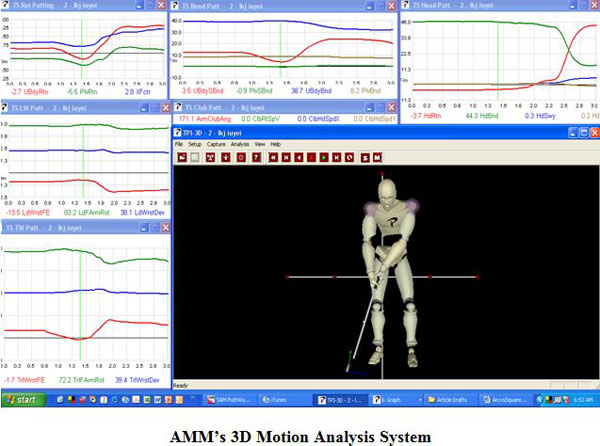
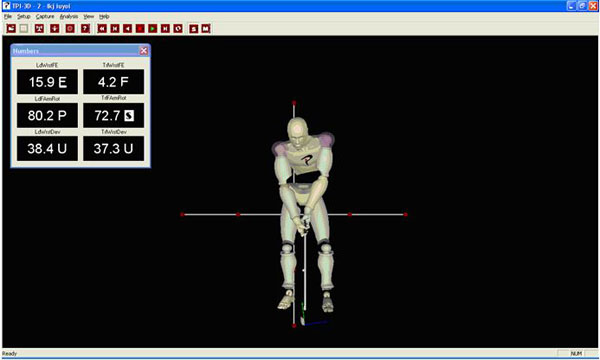
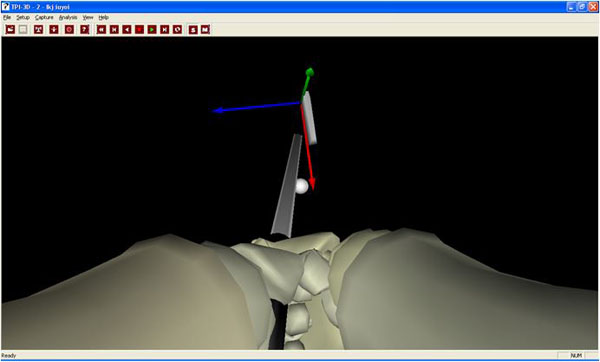
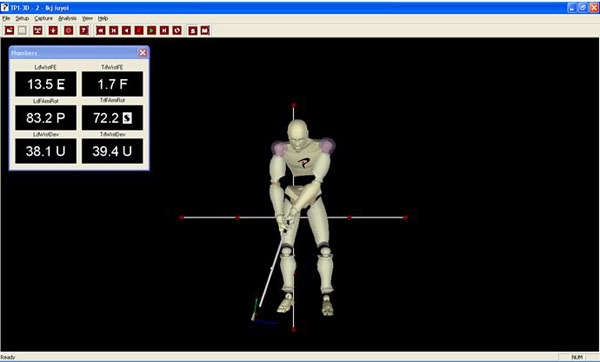
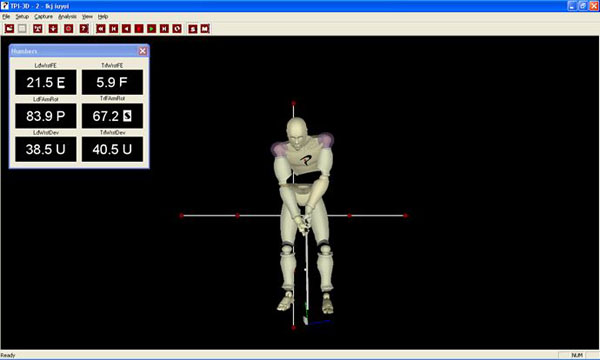
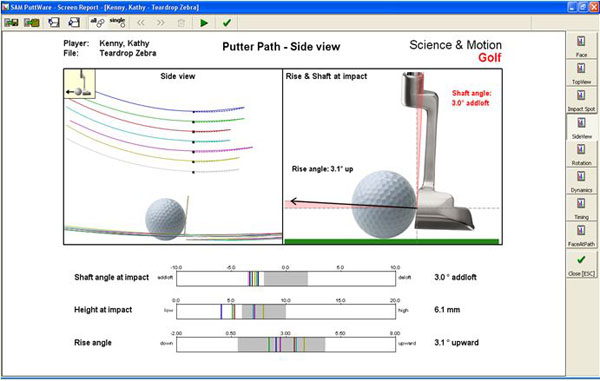
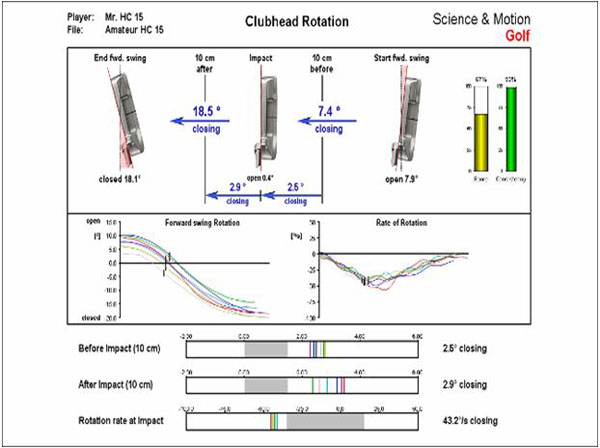
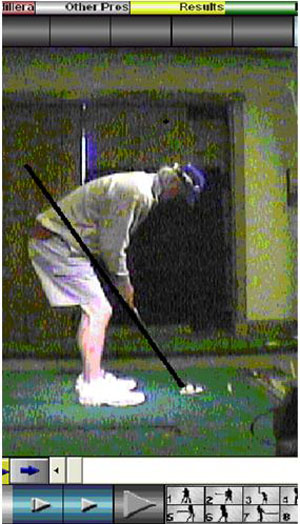























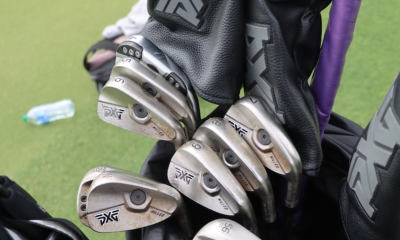

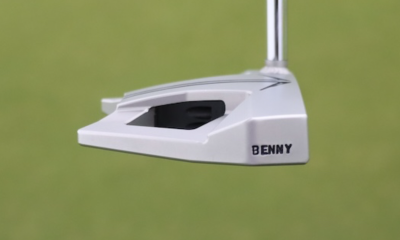

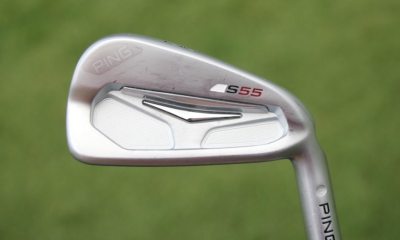

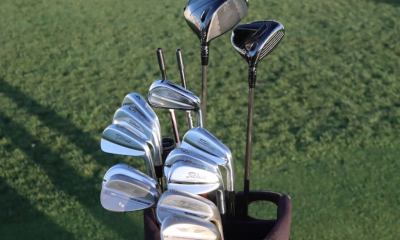

Andrew Cooper
Dec 20, 2013 at 10:14 am
So many great putters have had fairly wristy, or certainly a soft hands, type of putting action, that to say wrist action is the no.1 killer in putting is a bit misleading. Bad wrist action maybe, but not wrist action per se. Conversely I’ve seen very few very good putters who’ve a real stiff wrist action. Scientific models would suggest less movement would help consistency and precision-but the best putters certainly look very comfortable and relaxed, with a soft look-allowing the putter to swing a little. Even among tour players, the relatively poor putters often look stiff, locked-as if they’re over trying to control the movement-trying really hard not to use their wrists.
I really think this emphasis on not using the wrists screws up a lot of golfers. Standing over a putts with the thought of “don’t use the wrists” isn’t going to help-in fact it’s probably the first step towards developing the yips.
All the science is clever-but ultimately it’s a stick and a ball and a very simple task. Over thinking it is dangerous.
tom stickney
Jan 15, 2014 at 4:01 pm
It’s all about stability not immobilization for sure
Tom
Dec 19, 2013 at 1:58 am
Personally, for me, this is waaaaayyyy too technical and scientific. I read Brandt Sneeeedeker’s putting instruction in GOLF magazine? or Golf Digest? a few months ago and haven’t looked back. He advocates a wristy stroke with the head of the putter striking firmly through the stroke and traveling further through than the butt of the putter. VERY wristy and has freed me up on the greens. I currently use Brandt’s style of short, sweet, and wristy feel stroke, coupled with my preference putting while looking at the HOLE. Have never putted better. Think less, let if flow, play better. My experience, at least.
Dave
Dec 19, 2013 at 8:19 am
It is a bit strange to look at the target, only because MOST don’t. When I do look, more times than not, It had a closer look than not. An open stance works best for me if I do look. At the very least usually a tap in Our brains tell us what to do. Same goes for basketball, football , billiards, archery, and pretty much all others where aim is crucial. Imagine Driving your car without looking at the road, or just text for a few seconds. That goes without saying not good. In the moment, you see it, trust it, feel it, swing to it. Firm grip for me is best. To each his own, we own it. I’m big on adjustability. My own breed of putters allows undeniable tweaks to find perfection fit. Undeniable, the face must be aimed at the target regardless of techniques used to get the job done. The ark we all have varies. Where the ball is positioned and where the ark is back at intended aim dictates direction, and was our interpretations reads spot on. 18 one putts is my goal, unachievable in reality however 22 is my personal and average 27. Not alway the case till I tried every possibility.
Tom
Dec 19, 2013 at 10:20 am
Looking at the hole while putting solved my 2 biggest problems: 1)tightening up and freezing over putts 2)being mentally affected when my takeaway mirrored a Jim Furyk fairway swing! I am totally free of those 2 issues looking at the hole. A couple other benefits have been – greatly improved distance control and a noticeable reduction in 3 putts. My putts are short of the hole MUCH less now. Had tried this looking at the hole method a few different times over the past 3 years or so but I’m sticking with it now, together with the wristy-pop Snedeker preached stroke(the shorter wrist hinged takeaway reduces my chances of the club drifting off line). You’re right…to each his/her own and this has freed me up mentally on the greens, which has been the most important gain for me. Putting is fun again, period.
Mike H
Dec 26, 2013 at 9:47 am
I’ve got a similar story as you Tom. After reading the Brandt Snedeker article I changed my putting stroke to more of a “pop” stroke with a lot more wrist action. Every facet of my putting has improved…better lag putting, better from 6 feet and in, less 3-putting. Wrist action isn’t the number one killer of putting. The number one killer in putting is the same as the number one killer in the full swing, inconsistent stroke/swing.
joro
Dec 18, 2013 at 10:52 am
I disagree. Look at the number of wristy “pop” putters on tour. This long flowing stroke stuff does not give you the control a wristy “pop” style does. Just look and see what best really do. Short backswing and a strong short stroke gives you direction and distance control.
They have been feeding this long flowing stuff to us for years until we have bought it. Try the wrist stroke and make your own decision.
Joe
Dec 17, 2013 at 7:19 pm
It would be nice if you offered some solutions. Whats the point of doing analysis if you can’t offer any recommendations.
Tom Stickney
Dec 18, 2013 at 2:38 am
Once again this article is a research piece not a golf magazine article offering simple quick fixes….
Joe
Dec 18, 2013 at 12:07 pm
Well aside from your snide reply, this article is found under teh path for INSTRUCTION(Home > Instruction > Wrist action: The No. 1 killer of good putting).
So if it is simply a research article, then put in its proper location! Don’t put it under “Instruction”.
JM
Dec 18, 2013 at 6:41 pm
Well.. you did bill wrist action as the #1 killer of good putting but really it was a research piece. The title suggests you conclude that wrist action destroys good putting which makes people assume you believe it is a direct cause of bad putting.
The article only describes bad and good wrist movement and does to prove whether wrist action is a root cause of bad putting or simply something that occurs in people who are bad putters as the result of compensating for other mistakes in their stroke. There is correlation, but is there causality?
I
Dave
Dec 18, 2013 at 10:51 am
Putting is physics and physical player manipulations. Angles dictate every aspect of the stroke as well documented here. No one makes every putt and never will. Yet we keep trying. Im still in! All problems addressed here could be partially putters that may not fit the player precisely. A putter with set parameters is what it is, get use to it. Sure you can change how you play it, however you will be altering something else that was perhaps a strength in aim or whatever. I can set the loft, shaft offsets, length, even a grip offset feature. One tweak doesn’t alter another. Total adjustability can and will find better performance on a personal level. Arrowhead Putters seeks to let the golfer have choices to compensate for physics, angles, and players preferences, to help take the flaws out of the equation. The information article here is spot on. Just implement it, paired properly, and hopefully the player can be spot on.
Alex
Dec 17, 2013 at 3:04 pm
I can´t quite understand these articles that deal with putting as if it was a matter of science.
I know this guy who takes the putter away very short with firm wrists and he just hits the ball with his right hand unhinging. The move looks strange but beautiful, his right hand always perfect towards the hole. He must be the best putter at my club.
Eagle006
Dec 17, 2013 at 2:12 pm
Very interesting article. Not sure I understand all the negative comments. Yes, it’s a technical piece, but some people respond well to and learn from information presented in that way. Ultimately the author is trying to help. If you don’t like it, go and read something else. And if you don’t have anything good to say……
Tom Stickney
Dec 17, 2013 at 3:51 pm
Thx Eagle…it’s a research piece not a magazine article.
mullidan
Dec 17, 2013 at 11:03 am
Would just like to point out the image sizes make it almost impossible to use which makes the information in this article much more difficult to digest. At least for those of us who like to see something visual with our content. However, even though the content was very technical in nature I think it helps point out just how important it is to have consistent wrist positions/angles from address to impact to improve putter consistency. Overall, enjoyed the article but make the images larger please.
j
Dec 16, 2013 at 10:05 pm
lot of technical info in this article, not the easiest to digest.
so we have nailed down that wrist action should be limited/passive if possible
do you think wrist action is the source/cause of the problem or is the wrist action simply a reaction/result of trying to compensate for other problems in the players stroke?
do we work on eliminating wrist action or do we look to the source of why the wrists are behaving the way they are?
Scooter McGavin
Dec 16, 2013 at 9:35 pm
Not going to lie… I couldn’t get halfway through this. Zzzz…
Eric
Dec 16, 2013 at 9:25 pm
Brad Faxon, one of the best putters in the history of the game, disagrees with this article. He clearly states that there is wrist action in a good putting stroke.
Abu Dhabi Golfer
Dec 17, 2013 at 10:38 am
Exactly – Faxon is clear about this. And when looking at him putt, it is as though his lack of fear allows his wrists to get involved.
This contrasts against players who have fear and are trying to control their wrists just the right amount or who try putting with their shoulders while locking their wrists. Recipe for the yips.
And, look at kids who tend to be fearless and effective putters. Their putts are often like mini swings with a lot of wrist involvement.
Keith
Dec 17, 2013 at 3:22 pm
Dave Stockton is a proponent of some involvement of the wrists as well. It’s obviously more about making a consistent and confident stroke whether it involves any hinge or not.
Eric
Dec 16, 2013 at 9:23 pm
Scientific study, over-analysis with computers, facts, figures, exhibits, spreadsheets and diagrams…?
…..the number one killer of the pleasure of golf.
Tom Stickney
Dec 16, 2013 at 10:31 pm
Eric and Scooter–
This article was done from a research standpoint thus the length and depth; sorry you didn’t enjoy the article. If you want simplicity I would suggest my youtube channel.
Bret
Dec 16, 2013 at 8:00 pm
I agree 100% with all the findings of the study. I have always had a problem with my wrists breaking down in the putting stroke, although I did not understand until reading this article all the science involved. My solution which is working great for me is the Arm Lock putter and associated method which takes the wrists out of the stroke. I wonder why more people are not going to this.
paul
Dec 16, 2013 at 7:48 pm
The number one killer of good golf is my wife not wanting me to play to much. (once every three weeks) how am i supposed to get better?
DB
Dec 17, 2013 at 9:51 am
I concur with Paul’s expert analysis. We need to study why playing every 2-3 weeks is perceived as “All the time.”
Keith
Dec 17, 2013 at 3:23 pm
Well, it’s quite obvious how you get better….although it will be expensive and involve the division of assets!
paul
Dec 17, 2013 at 11:44 pm
Lol. I cant get away now. i am comitted.
playing once every 3 weeks being perceived as all the time comes from a wife who is over loaded with work. so if its 9pm and i am not busy or i am relaxing then i am a bad husband. playing golf is considered wasting time. if i have time, its wasting money. (1200 a year, play and equipment) she has no fun so i shouldnt either.